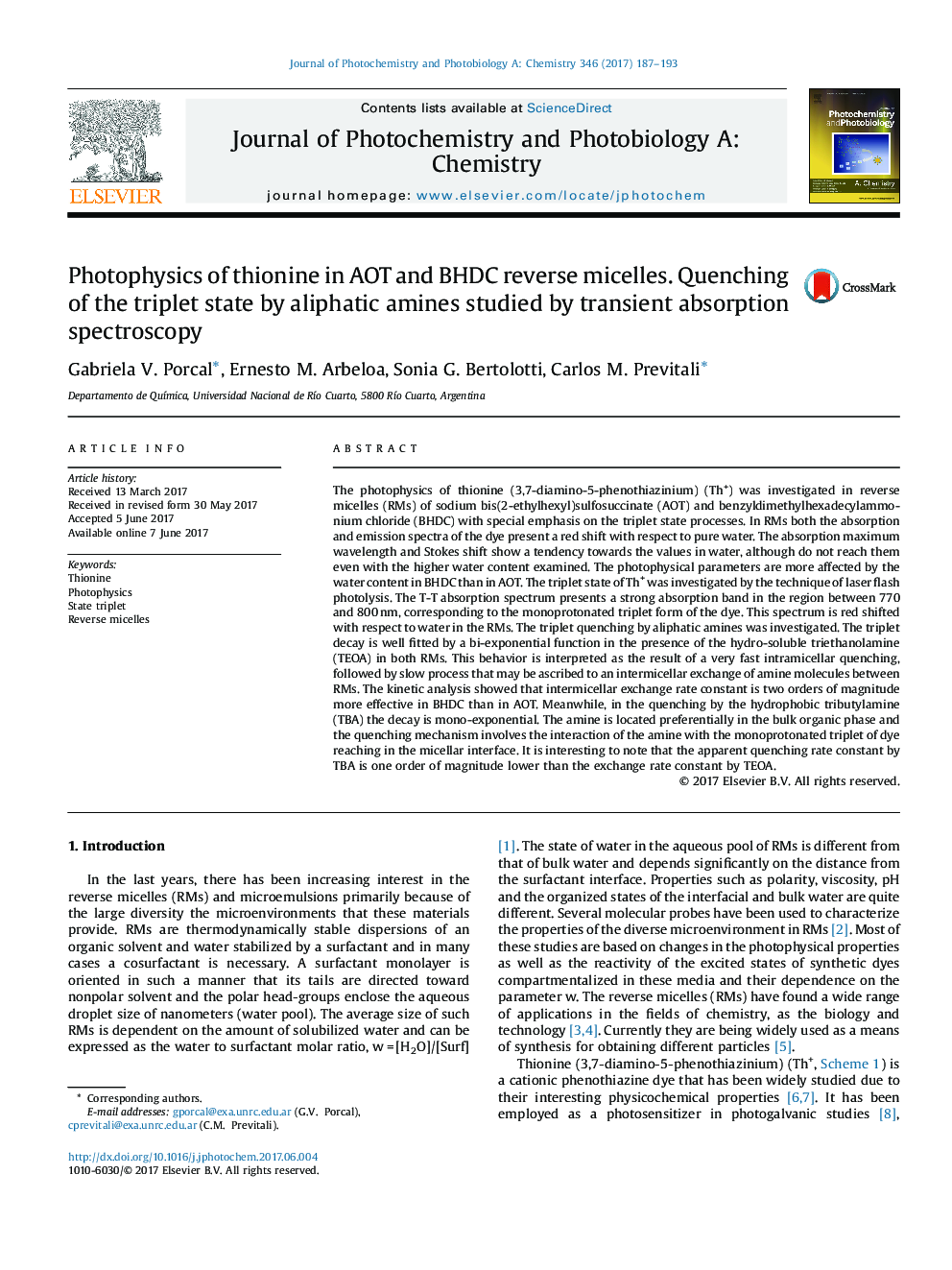| کد مقاله | کد نشریه | سال انتشار | مقاله انگلیسی | نسخه تمام متن |
|---|---|---|---|---|
| 4753815 | 1417594 | 2017 | 7 صفحه PDF | دانلود رایگان |

- The photophysics of thionine was investigated in reverse micelles (RMs) of AOT and BHDC.
- The dye molecules remain at the interface sensing a less polar medium in both RMs.
- Apparent triplet quenching rate constants by tri-ethanolamine (TEOA) and tri-butylamine (TBA) were determined in RMs.
- Triplet quenching by TEOA leads to a non-exponential decay in the RMs.
- The triplet state is efficiently quenched by hydrophilic TEOA.
The photophysics of thionine (3,7-diamino-5-phenothiazinium) (Th+) was investigated in reverse micelles (RMs) of sodium bis(2-ethylhexyl)sulfosuccinate (AOT) and benzyldimethylhexadecylammonium chloride (BHDC) with special emphasis on the triplet state processes. In RMs both the absorption and emission spectra of the dye present a red shift with respect to pure water. The absorption maximum wavelength and Stokes shift show a tendency towards the values in water, although do not reach them even with the higher water content examined. The photophysical parameters are more affected by the water content in BHDC than in AOT. The triplet state of Th+ was investigated by the technique of laser flash photolysis. The T-T absorption spectrum presents a strong absorption band in the region between 770 and 800Â nm, corresponding to the monoprotonated triplet form of the dye. This spectrum is red shifted with respect to water in the RMs. The triplet quenching by aliphatic amines was investigated. The triplet decay is well fitted by a bi-exponential function in the presence of the hydro-soluble triethanolamine (TEOA) in both RMs. This behavior is interpreted as the result of a very fast intramicellar quenching, followed by slow process that may be ascribed to an intermicellar exchange of amine molecules between RMs. The kinetic analysis showed that intermicellar exchange rate constant is two orders of magnitude more effective in BHDC than in AOT. Meanwhile, in the quenching by the hydrophobic tributylamine (TBA) the decay is mono-exponential. The amine is located preferentially in the bulk organic phase and the quenching mechanism involves the interaction of the amine with the monoprotonated triplet of dye reaching in the micellar interface. It is interesting to note that the apparent quenching rate constant by TBA is one order of magnitude lower than the exchange rate constant by TEOA.
114
Journal: Journal of Photochemistry and Photobiology A: Chemistry - Volume 346, 1 September 2017, Pages 187-193